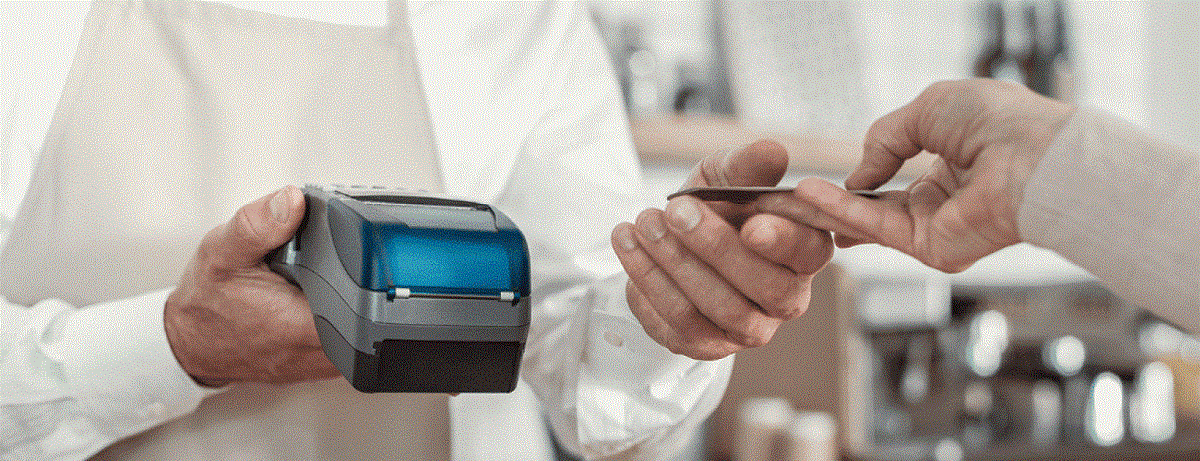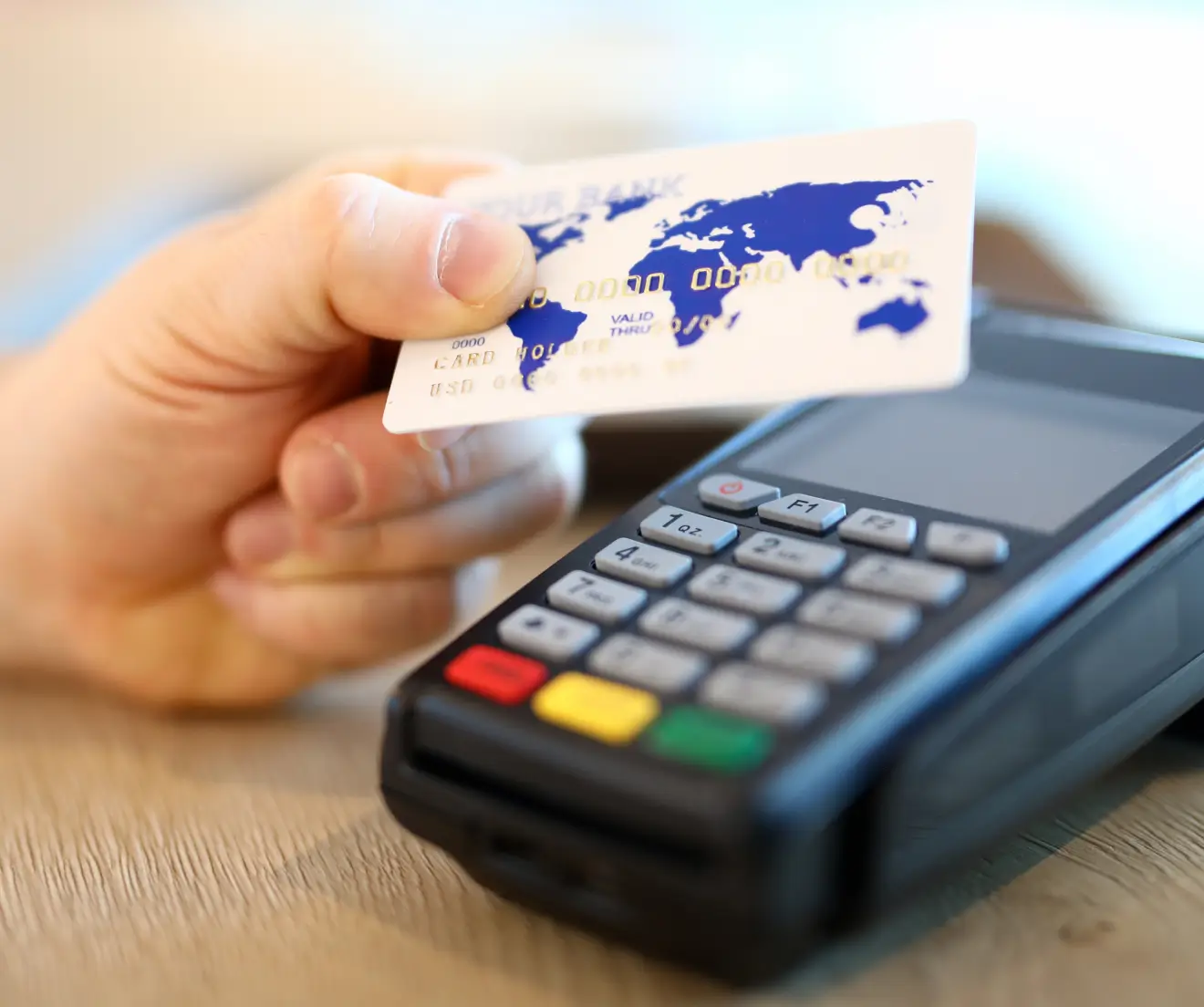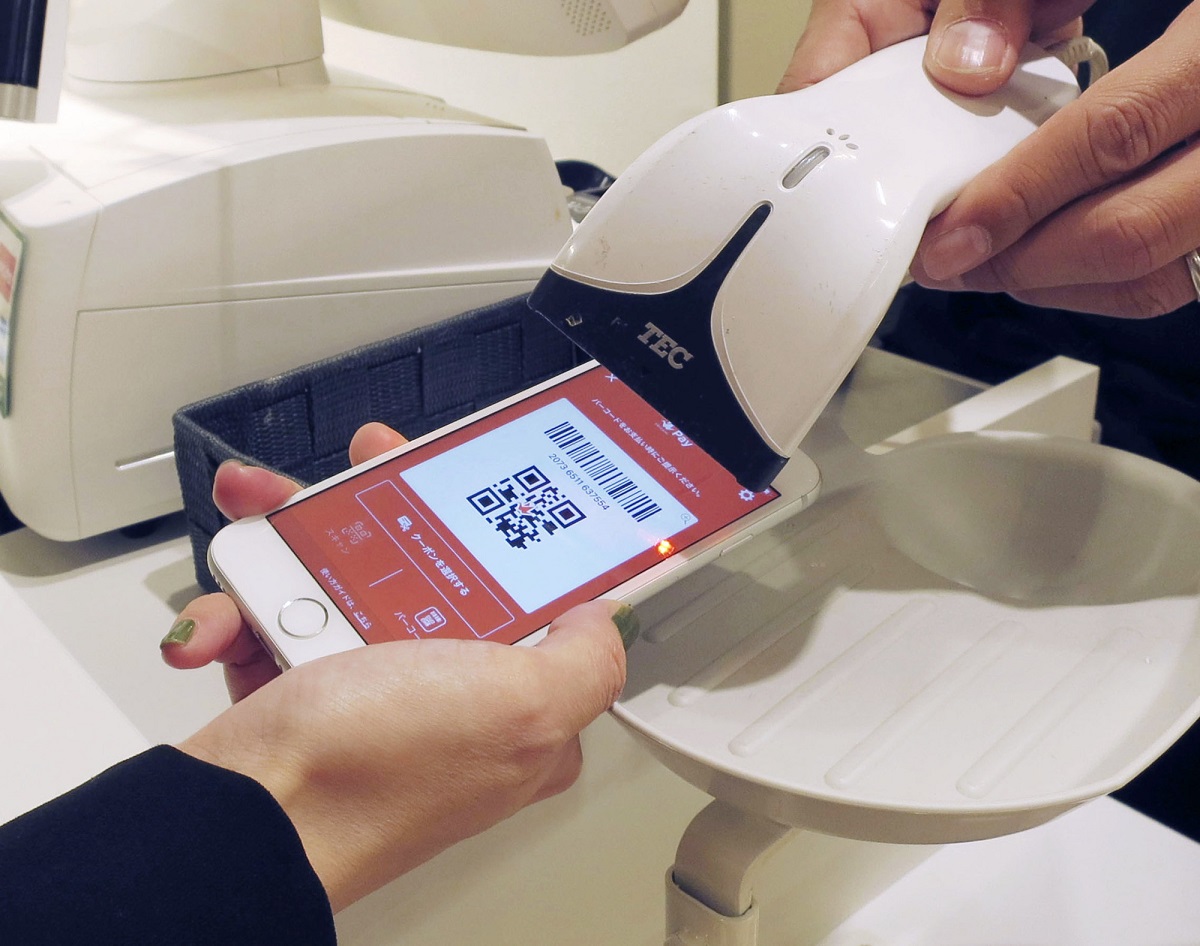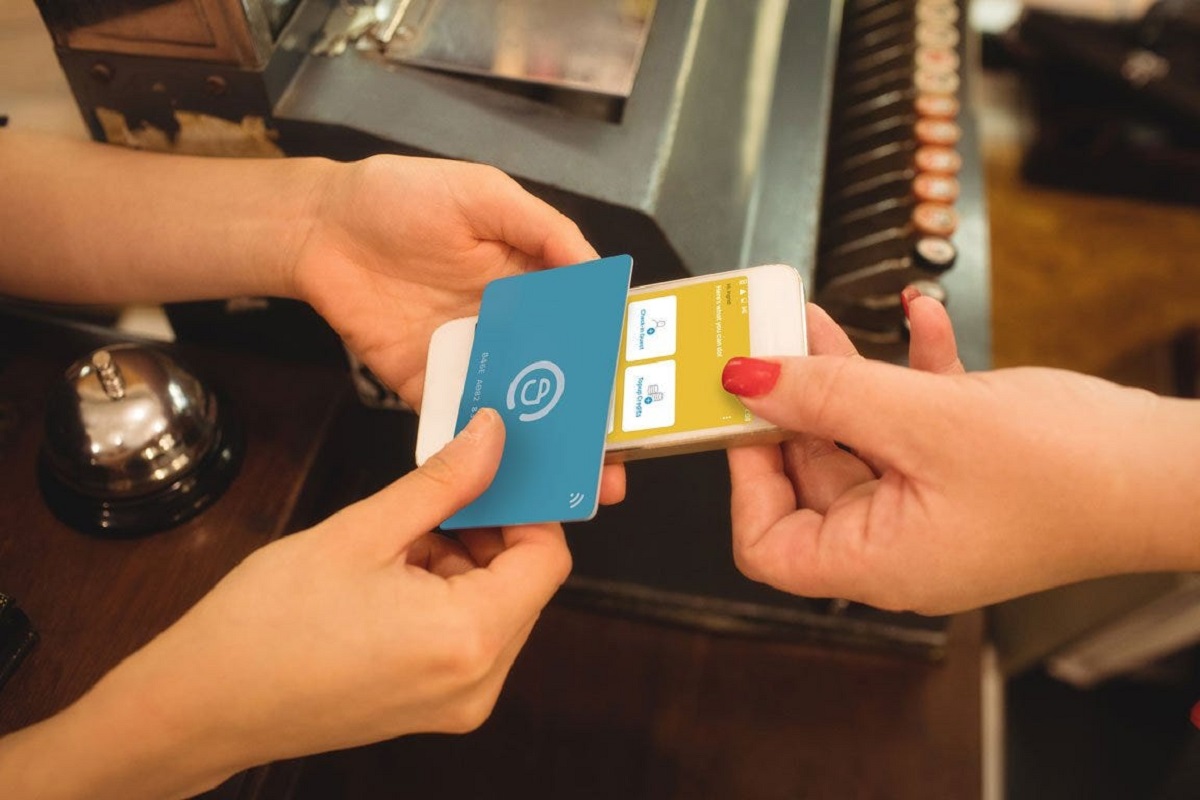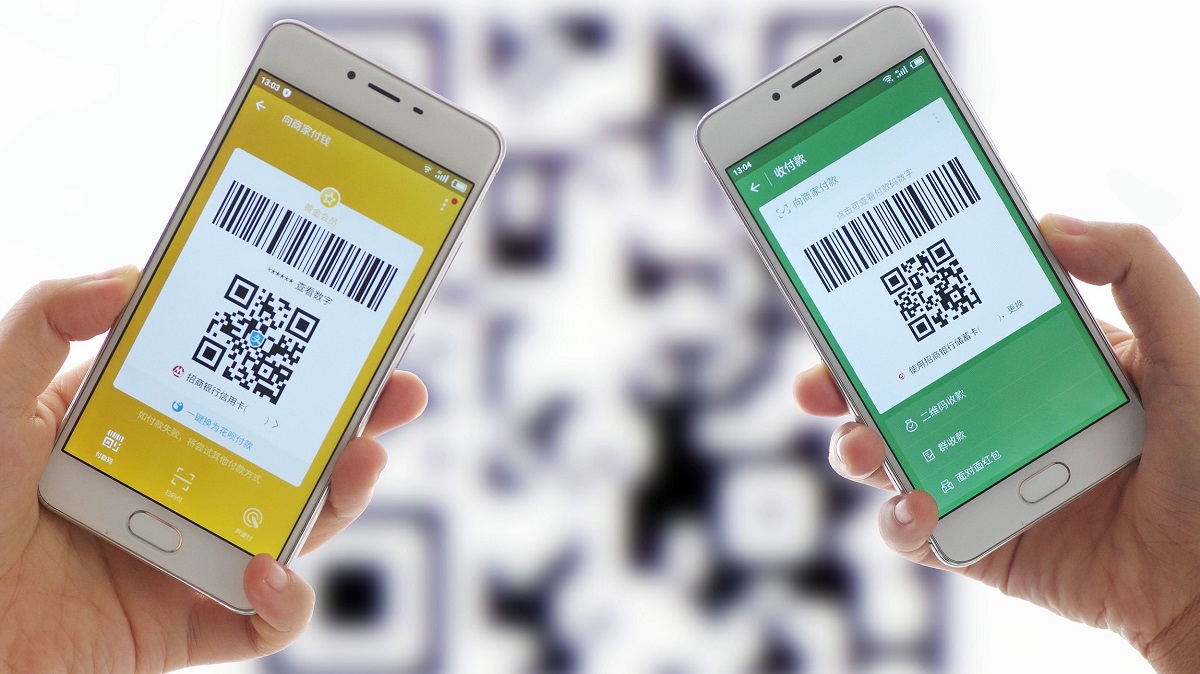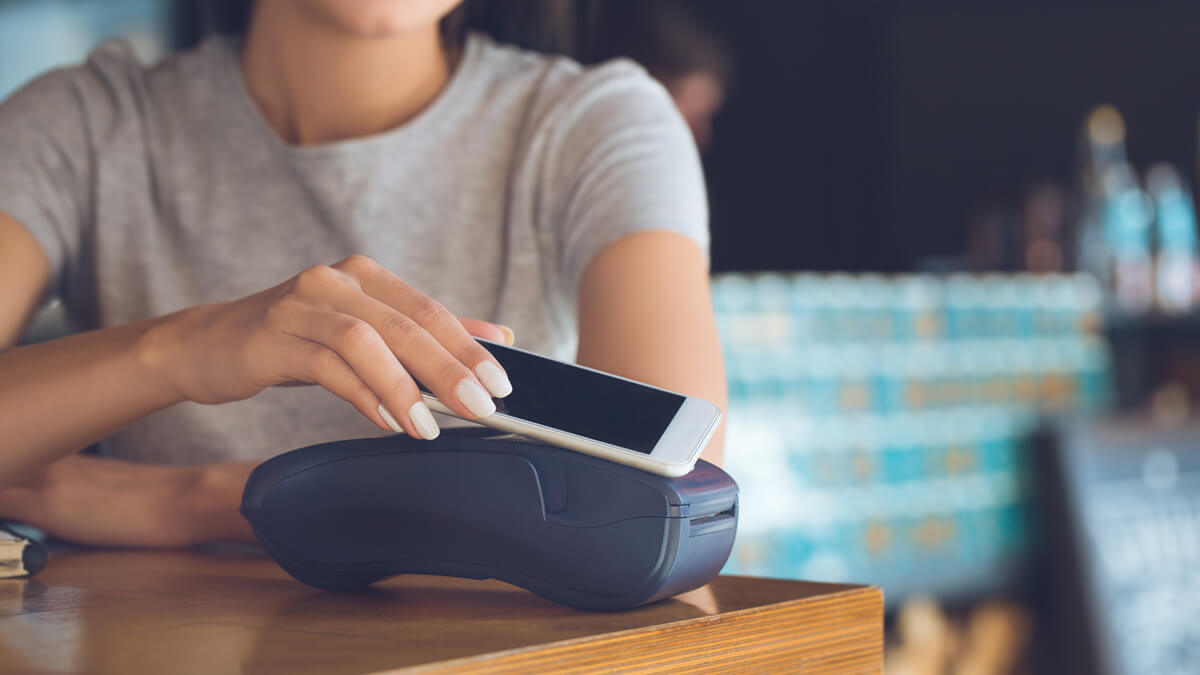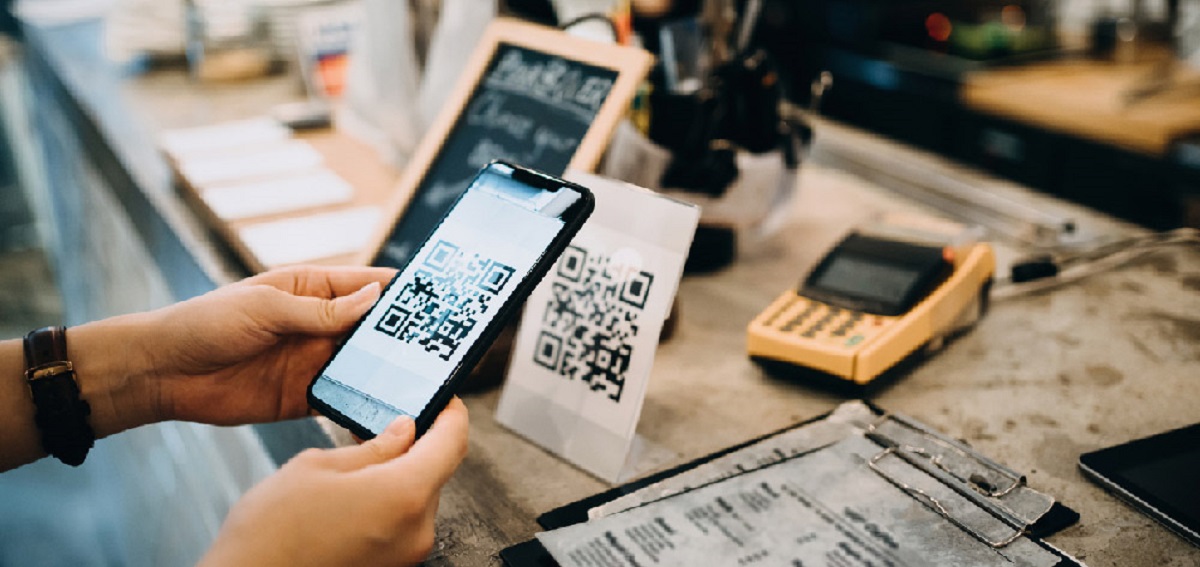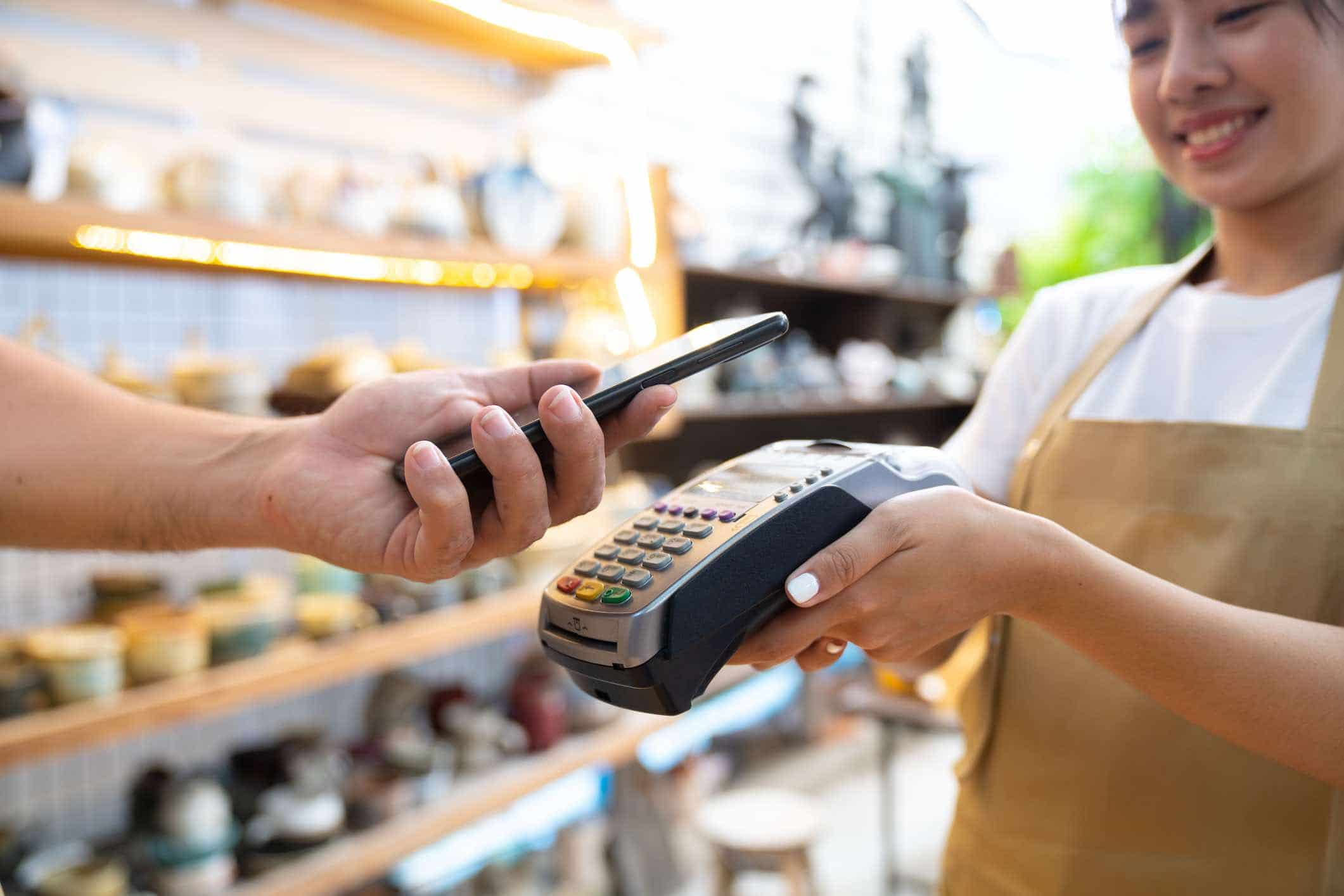Introduction
Cashless payments have become increasingly popular in recent years, transforming the way we conduct financial transactions. From mobile wallets to contactless cards, customers now have more options than ever when it comes to paying for goods and services. This shift towards cashless transactions has not only revolutionized the way we shop, but it has also had a significant impact on the restaurant industry.
In this article, we will explore the trend of restaurants going cashless and examine the benefits and drawbacks associated with this digital payment system. We will also take a closer look at some restaurants that have embraced the cashless concept, as well as those that have reversed their decision to do so. Additionally, we will discuss how going cashless can affect both customers and employees, and what the future may hold for cashless restaurants.
With the advancement of technology and the convenience it brings, it is no surprise that many businesses, including restaurants, are opting for cashless payment solutions. By eliminating the need for physical cash, restaurants can streamline their operations, reduce the risk of theft, and provide a more efficient and convenient dining experience for their customers.
However, the shift towards a cashless society is not without its challenges. There are concerns about accessibility and exclusion, as some individuals may not have access to the necessary technology or may prefer to use cash for privacy reasons. Additionally, there are legal and regulatory considerations that restaurants must navigate when implementing a cashless payment system.
While the debate surrounding cashless restaurants continues, it is clear that this trend is reshaping the dining experience. As technology continues to advance and consumers become more comfortable with digital payments, the future of cashless restaurants looks promising. Let’s delve into the rise of cashless payments and the impact it has had on the restaurant industry.
The Rise of Cashless Payments
Cashless payments have experienced a significant surge in popularity over the past decade. With the proliferation of smartphones and the convenience they offer, more and more consumers are opting for digital payment methods instead of carrying cash.
One of the main drivers behind the rise of cashless payments is the advent of mobile payment apps. Platforms like Apple Pay, Google Pay, and Samsung Pay allow users to link their credit or debit cards to their smartphones, enabling easy and secure transactions with just a tap or a scan.
Additionally, contactless cards have gained traction, with many customers preferring the convenience of simply tapping their card on a reader rather than inserting or swiping it. The speed and ease of these transactions have made contactless cards a popular choice for consumers.
Another significant factor in the growth of cashless payments is the increasing acceptance and prevalence of digital wallets. These virtual wallets store customers’ payment information, allowing them to make purchases online or in-store without the need to enter their card details repeatedly.
The shift towards cashless payments has also been driven by the benefits they offer both consumers and businesses. For consumers, cashless transactions provide convenience, security, and the ability to track their spending digitally. They no longer need to worry about carrying large amounts of cash or fumbling for exact change.
Businesses, including restaurants, are also embracing cashless payments for several reasons. First and foremost, going cashless can improve operational efficiency. Cash transactions require additional time for handling and counting, whereas digital payments are faster and easier to process.
Additionally, going cashless can help reduce the risk of theft and the need for regular cash handling, which allows businesses to focus on other aspects of their operations. It also minimizes the risk of counterfeit currency, providing a safer environment for both employees and customers.
Furthermore, cashless payments offer businesses greater insights into customer behavior and spending patterns. With digital transactions, businesses can gather data on purchasing habits, preferences, and demographics, allowing for more targeted marketing strategies and personalized experiences.
The rise of cashless payments in various industries, including the restaurant sector, is evident. Many consumers now expect to have the option to pay with their preferred digital methods when dining out. As a result, restaurants are increasingly recognizing the need to adapt and implement cashless payment options to meet customer demand and stay competitive.
Benefits of Going Cashless
There are numerous benefits associated with restaurants embracing cashless payment systems. Let’s explore some of the advantages that come with going cashless.
1. Improved Efficiency: Cashless transactions streamline the payment process, enabling quicker and more efficient service. With digital payments, there is no need for cashiers to handle physical money or count change, reducing potential errors and saving valuable time.
2. Enhanced Security: Cashless payments eliminate the risk of theft and burglary associated with storing and handling cash. Restaurants no longer need to worry about safeguarding large amounts of money on-site. Additionally, digital payment methods often come with built-in security features, such as encryption and authentication, ensuring that customer information remains protected.
3. Increased Hygiene: In the wake of the COVID-19 pandemic, hygiene and cleanliness have become even more critical in restaurants. Cash transactions involve physical contact between customers and employees, potentially increasing the spread of germs. By going cashless, restaurants can minimize person-to-person contact and promote a more hygienic environment for both customers and staff.
4. Enhanced Customer Experience: Cashless payments offer convenience to customers, allowing them to pay quickly and easily using their preferred method. With digital wallets and mobile payment apps, customers can keep track of their spending, access loyalty rewards, and receive electronic receipts. This level of convenience and added benefits can help enhance the overall dining experience and foster customer loyalty.
5. Insights and Data Analytics: Digital transactions provide a wealth of data that can be utilized to gain insights into customer behavior, preferences, and spending patterns. This data can be analyzed to make informed business decisions, tailor marketing strategies, and offer personalized recommendations to customers, ultimately leading to improved customer satisfaction and increased revenue.
6. Adaptation to Changing Consumer Behavior: With the increasing popularity of digital payments, customers have grown accustomed to the convenience and ease they offer. By going cashless, restaurants can cater to the preferences of their tech-savvy customers and stay relevant in an ever-evolving marketplace.
7. Integration with Loyalty Programs: Cashless payment systems can effortlessly integrate with loyalty programs, allowing restaurants to reward loyal customers with exclusive offers, discounts, and promotions. This integration not only helps attract and retain customers but also encourages repeat visits and word-of-mouth recommendations.
Overall, the benefits of going cashless extend beyond the operational advantages for restaurants. It enhances efficiency, security, and the overall dining experience, while also providing valuable data for analysis and marketing purposes. By embracing cashless payments, restaurants can position themselves at the forefront of technological advancements and meet the evolving needs and expectations of their customers.
Drawbacks of Going Cashless
While there are undeniable benefits to going cashless, it is important to acknowledge the drawbacks that can come with this shift. Let’s explore some of the potential downsides of embracing cashless payments in restaurants.
1. Exclusion of Certain Customers: Not everyone has access to the necessary technology or the ability to make digital payments. By going cashless, restaurants may inadvertently exclude customers who prefer or rely on cash transactions. This can be an issue for individuals who are unbanked, have limited access to smartphones or payment apps, or simply prefer using cash for personal reasons.
2. Connectivity and Technical Issues: Cashless transactions rely on stable internet connectivity and the proper functioning of payment systems. In areas with poor internet coverage or during technical outages, restaurants may face disruptions in accepting digital payments. This can lead to frustrated customers and potential loss of sales.
3. Legal and Regulatory Considerations: Implementing cashless payment systems requires adherence to various legal and regulatory requirements. Restaurants must comply with data protection, privacy laws, and anti-fraud regulations. Failure to meet these obligations can result in legal consequences, fines, and damage to the restaurant’s reputation.
4. System Downtime and Technical Maintenance: Cashless systems are not immune to technical glitches and maintenance requirements. Restaurants must ensure their payment infrastructure is regularly maintained and updated to prevent disruptions or system failures. Any downtime can lead to inconvenience for customers and potential loss of sales.
5. Dependency on Electronic Infrastructure: Cashless payments rely heavily on electronic infrastructure, including point-of-sale systems, card readers, and digital payment platforms. In the event of power outages or technical failures, restaurants may find themselves unable to accept any form of payment, resulting in a loss of sales and potentially disgruntled customers.
6. Privacy and Security Concerns: With the increasing reliance on digital payments, there are legitimate concerns about the privacy and security of customer data. Restaurants must ensure they have robust security measures in place to protect sensitive customer information from potential data breaches or cyber-attacks.
7. Resistance to Change: Some customers and employees may be resistant to the shift towards cashless payments, either due to unfamiliarity with technology or a preference for traditional cash transactions. Restaurants may face challenges in educating and convincing both customers and employees about the benefits and safety of cashless payments.
Despite these potential drawbacks, many of them can be mitigated through proper planning, education, and strategic implementation of cashless systems. It is crucial for restaurants to carefully consider the implications and be proactive in addressing any concerns that arise from going cashless.
By taking a balanced approach and considering the needs of all stakeholders, restaurants can navigate the potential drawbacks while still reaping the benefits that cashless payments bring to their operations and customer experience.
Restaurants that Have Gone Cashless
As the popularity of cashless payments continues to grow, many restaurants have embraced this trend and transitioned to cashless operations. Let’s take a look at some notable examples of restaurants that have gone cashless.
1. Sweetgreen: This fast-casual salad chain made headlines in 2017 when it announced that all its locations would go cashless. Sweetgreen cited reasons such as faster service, increased efficiency, and improved safety as drivers for the decision. By going cashless, they aimed to streamline their operations and enhance the overall customer experience.
2. Dos Toros: Dos Toros, a Mexican fast-casual chain, also joined the cashless movement. They implemented digital payment options in their restaurants to facilitate faster service and reduce wait times. Dos Toros saw the benefits of going cashless in terms of improved efficiency and the ability to better track transactions.
3. Tender Greens: Tender Greens, a California-based restaurant chain, transitioned to a cashless model in 2018. They aimed to improve their operational efficiency by eliminating the manual handling of cash. Additionally, going cashless allowed Tender Greens to offer innovative digital loyalty programs and personalized rewards to their customers.
4. Bluestone Lane: Bluestone Lane, a popular Australian-inspired café chain, made the decision to go cashless in 2019. The move was motivated by the company’s desire to align with their tech-savvy customer base and provide a more seamless and efficient payment experience. Going cashless also allowed Bluestone Lane to accelerate their digital transformation initiatives.
5. Eatsa: Eatsa, a tech-forward fast-food chain, took the cashless concept to the next level. Their fully-automated restaurants allowed customers to place their orders through digital kiosks and pick up their food from cubbies without any interaction with staff. Eatsa focused on delivering a futuristic and efficient dining experience through cashless and automated operations.
These restaurants are just a few examples of the growing number of establishments that have embraced cashless payments. By going cashless, these restaurants have aimed to simplify their operations, increase efficiency, and provide a more convenient and seamless experience for their customers.
It is worth noting that while many restaurants have adopted cashless systems, there are also establishments that have chosen to maintain cash as an option alongside digital payments. They recognize the importance of accommodating customers who still prefer to use cash or may not have access to digital payment methods.
As the cashless movement continues to gain momentum, it will be interesting to see how more restaurants adapt and integrate cashless options into their operations to meet the changing preferences of their customers.
Restaurants that Are Considering Going Cashless
The shift towards cashless payments has prompted many restaurants to consider embracing this trend. While not all have made the transition yet, several establishments are actively exploring the idea of going cashless. Let’s take a look at some of the restaurants that are considering going cashless.
1. Shake Shack: Shake Shack, a popular fast-food chain renowned for its delicious burgers and shakes, has been piloting cashless kiosks in select locations. By implementing self-service kiosks that accept only digital payments, Shake Shack aims to streamline the ordering and payment process, reduce wait times, and enhance the overall customer experience.
2. Starbucks: Starbucks, the world’s largest coffeehouse chain, is also exploring the possibility of going cashless. While they currently accept cash at all their locations, they have been gradually expanding their mobile ordering and payment options. With the success of their mobile app, which allows customers to make purchases using their smartphones, Starbucks may consider transitioning to a fully cashless model in the future.
3. Chipotle: Chipotle Mexican Grill, a fast-casual restaurant chain known for its customizable burritos and bowls, has been testing cashless stores in some cities. Through the use of digital ordering and mobile payment options, Chipotle aims to improve speed and efficiency while reducing the handling of cash. The success of these pilot programs may influence their decision to go fully cashless in the future.
4. Cava: Cava, a Mediterranean fast-casual chain, has also expressed interest in potentially going cashless. With a focus on technology and innovation, Cava has been exploring various digital advancements to enhance the customer experience. Going cashless would align with their commitment to efficiency and convenience while offering customers seamless and contactless payment options.
5. Pret A Manger: Pret A Manger, a popular international chain of fast-food restaurants, has been contemplating going cashless as part of its digital transformation strategy. By reducing cash transactions and encouraging digital payments, Pret A Manger aims to enhance operational efficiency, improve speed of service, and adapt to changing consumer preferences for contactless transactions.
These restaurants, among others, are actively considering the benefits and implications of going cashless. By exploring cashless initiatives, these establishments are recognizing the opportunities for increased efficiency, improved customer experience, and the potential to stay ahead in the ever-evolving restaurant industry.
However, it is important to note that the decision to go cashless is not one to be taken lightly. Restaurants must carefully assess the potential impact on their customer base, operational processes, and legal obligations. They must also consider the accessibility needs of all customers and find ways to accommodate those who may prefer or rely on cash transactions.
As the restaurant industry continues to evolve, it will be interesting to see which establishments decide to fully embrace the cashless concept and how they navigate the challenges and opportunities it presents.
Restaurants that Have Reversed the Decision to Go Cashless
While many restaurants have transitioned to cashless operations, there are several examples of establishments that have reversed their decision and reintroduced cash payments. Let’s take a look at some restaurants that have reversed their initial plans to go cashless.
1. Tender Greens: Tender Greens, a California-based restaurant chain mentioned earlier as a cashless adopter, reversed their decision in 2019. After going cashless in 2018, they realized that some customers preferred to pay with cash or experienced difficulties with digital payments. To cater to a broader customer base, Tender Greens reintroduced cash as a payment option, while still maintaining digital payment capabilities.
2. Dos Toros: Dos Toros, the Mexican fast-casual chain mentioned previously, also reversed their cashless policy. After implementing a cashless model in 2017, they found that some customers were apprehensive about the change and felt excluded from the ordering process. In response to customer feedback, Dos Toros decided to reinstate cash payments to provide greater accessibility for all patrons.
3. Joe Coffee Company: Joe Coffee Company, a specialty coffee chain in New York City, initially went cashless in 2016 to streamline operations and speed up service. However, they realized that eliminating cash payments created challenges for some customers, including those without access to digital payments or who preferred to pay with cash. Joe Coffee Company made the decision to reintroduce cash as a payment option in certain locations to better serve their diverse customer base.
4. Hi-Collar: Hi-Collar, a Japanese cafe in New York City, initially went cashless but later reversed the decision. While they aimed to modernize their operations by only accepting digital payments, they faced backlash from customers who preferred to use cash or experienced issues with their cards. In response to the feedback received, Hi-Collar reverted to accepting cash payments alongside digital methods.
5. Split Bread: Split Bread, a quick-service restaurant in San Francisco, had initially gone cashless but reversed their cashless policy after customer complaints. They found that some customers were not comfortable with exclusively using digital payments or experienced issues with their cards. By reintroducing cash payments, Split Bread aimed to create a more inclusive dining experience for all customers.
These examples highlight the importance of listening to customer feedback and considering the diverse preferences and needs of restaurant-goers. While going cashless may offer operational benefits, it is crucial for restaurants to assess the impact on their customer base and make adjustments accordingly to ensure a positive dining experience for all patrons.
Reversing the decision to go cashless allows restaurants to cater to a wider range of customers, including those who prefer cash payments or have limited access to digital payment methods. It also demonstrates the willingness of establishments to adapt and prioritize customer satisfaction in an ever-changing landscape.
As the debate surrounding the cashless movement continues, restaurant owners must carefully evaluate the advantages and disadvantages to determine the best approach that aligns with their overall business goals and customer expectations.
How Going Cashless Affects Customers
The shift towards cashless payments in restaurants has a direct impact on customers, influencing their dining experience and payment options. Let’s explore some of the ways that going cashless affects customers.
1. Convenience and Speed: One of the primary benefits for customers is the convenience and speed of cashless transactions. With digital payment methods, customers can quickly and easily complete their transactions without the need for physical cash or counting change. This streamlined process reduces wait times and allows customers to move through the ordering and payment process more efficiently.
2. Contactless Transactions: Going cashless encourages contactless transactions, which have become increasingly important in the context of health and hygiene, especially during the COVID-19 pandemic. By embracing digital payments, customers can minimize physical contact with cash, reducing the potential transmission of germs and creating a safer dining experience.
3. Greater Payment Options: Digital payment methods offer customers a wide range of options beyond traditional cash transactions. They can use mobile payment apps, contactless cards, or digital wallets, providing flexibility to choose their preferred payment method. Additionally, some cashless systems integrate loyalty programs, allowing customers to earn rewards or access discounts conveniently.
4. Tracking and Budgeting: Cashless transactions provide better tracking and budgeting capabilities for customers. With digital receipts and transaction records, customers can easily keep track of their expenses and analyze their spending patterns. This can assist in budgeting, financial planning, and gaining insights into their purchasing behavior.
5. Potential Exclusion: One potential drawback of going cashless is the potential exclusion of customers who prefer or rely on cash payments. This includes individuals who may not have bank accounts, access to digital payment methods, or who prioritize the use of cash for privacy reasons. Restaurants need to ensure they offer alternative payment options to cater to the needs of all their customers.
6. Technological Barriers: While digital payments offer convenience, they can pose challenges for customers who are less familiar with technology or have limited access to smartphones or payment apps. Restaurants must provide user-friendly systems, clear instructions, and supportive staff to assist customers who may require help navigating the digital payment process.
7. Security and Fraud Protection: Cashless payments offer enhanced security and fraud protection for customers. With features like encryption and secure authentication, digital payments provide peace of mind and mitigate the risk of counterfeit currency or theft compared to physical cash transactions.
8. Adaptation to Changing Norms: Going cashless aligns with the evolving societal norms and consumer expectations. As digital payments become increasingly prevalent, customers are becoming more comfortable with and expectant of cashless options. By embracing this trend, restaurants can meet customer demands and provide a modern and seamless dining experience.
Overall, going cashless offers customers greater convenience, speed, and security in their transactions. However, it is important for restaurants to balance the benefits with the need to accommodate all customers and consider the potential exclusion of those who rely on cash payments. By providing a variety of payment options and ensuring accessibility, restaurants can create a positive and inclusive experience for customers in the cashless era.
How Going Cashless Affects Employees
The shift towards cashless payments in restaurants not only impacts customers but also has implications for the employees. Here, we will explore how going cashless affects employees in various ways.
1. Increased Efficiency: Going cashless can enhance the efficiency of restaurant operations, positively impacting employees. Without the need to handle and count physical cash, employees can focus on other tasks such as food preparation and customer service. This streamlined process allows employees to serve customers more quickly and efficiently, leading to a smoother workflow and improved productivity.
2. Reduced Risk and Security: By eliminating cash transactions, employees face a reduced risk of theft and handling counterfeit currency. This creates a safer working environment and lessens the responsibility placed on employees to safeguard cash deposits. Employees can be confident in the security and accuracy of digital payment systems, minimizing potential errors and fraudulent activities.
3. Adaptation and Training: Employees may need to undergo training to become familiar with new cashless systems and processes. They will need to learn how to operate point-of-sale systems, assist customers with digital payments, and troubleshoot any technical issues. Restaurants need to provide comprehensive training and support to ensure employees are comfortable using the new technology.
4. Change in Job Responsibilities: Going cashless may result in a shift in job responsibilities for employees. With fewer cash handling tasks, employees can allocate their time towards other customer service or operational duties. For example, they may focus on assisting customers with digital payment options, providing personalized recommendations, or maintaining cleanliness in the dining area.
5. Customer Service and Technology Support: With the implementation of cashless systems, employees will likely need to provide additional customer service and technical support. Some customers may have questions or encounter difficulties with digital payments, and employees will need to assist and guide them through the process. Employees should be knowledgeable about the different payment methods available and be able to troubleshoot common issues.
6. Potential Job Loss: In certain cases, the shift towards cashless payments may result in job loss for employees who were previously handling cash-related tasks. For example, cashier positions may become obsolete in cashless restaurants that solely rely on self-service kiosks or mobile ordering systems. Restaurants need to carefully manage these transitions and consider alternative roles or retraining opportunities for affected employees.
7. Inclusivity and Accessibility: It’s important for restaurants to consider the inclusivity and accessibility of cashless payment systems for both employees and customers. Employees should have access to training and support to adapt to the new systems. Additionally, restaurants should ensure that all customers, including those who prefer or rely on cash, are still accommodated through alternative payment options.
8. Leveraging Technology and Innovation: Going cashless presents an opportunity for employees to work with innovative technology and gain valuable skills in digital payment systems. It can serve as a catalyst for professional growth and development, empowering employees to adapt to advancements in the industry and expand their technological proficiency.
In summary, going cashless can improve efficiency, decrease risk, and change job responsibilities for employees in the restaurant industry. While the transition may require adaptation and training, it also opens up opportunities for employees to embrace technology, enhance customer service, and contribute to a safer and more streamlined working environment.
The Future of Cashless Restaurants
The future of cashless restaurants promises continued evolution and transformation in the way we dine and transact. Here, we will explore some key trends and possibilities that lie ahead for cashless restaurants.
1. Seamless Integration of Technology: Cashless restaurants will continue to leverage technology to provide a seamless and efficient dining experience. This includes the integration of mobile ordering platforms, self-service kiosks, and advanced digital payment options. Restaurants will strive to create a frictionless transaction process that maximizes convenience for customers.
2. Contactless and Biometric Payments: Going beyond traditional payment methods, cashless restaurants will embrace contactless payments and biometric authentication. This may involve the use of facial recognition, fingerprint scans, or voice commands to authorize transactions, minimizing physical contact and enhancing security.
3. Enhanced Personalization: With the wealth of data amassed through cashless transactions, restaurants will have the opportunity to personalize the dining experience at a whole new level. Through data analytics and customer insights, restaurants can offer personalized recommendations, customized offers, and tailored promotions based on individual preferences and purchasing history.
4. Expanded Loyalty Programs: Cashless restaurants will leverage digital payment systems to enhance loyalty programs. Customers will enjoy seamless redemption of rewards, earning loyalty points with every payment and enjoying exclusive perks and incentives. Restaurants will leverage these programs to foster customer loyalty, increase retention, and drive repeat business.
5. Integration with Delivery Services: Cashless restaurants will continue to integrate with third-party delivery platforms, facilitating digital payments for off-premise dining options. Customers will be able to conveniently pay for their food deliveries through mobile apps or online platforms, creating a seamless end-to-end experience from ordering to payment.
6. Blockchain and Cryptocurrency: The rise of blockchain technology and cryptocurrencies may also play a role in the future of cashless restaurants. Blockchain-based payment systems and digital currencies offer increased security, transparency, and faster transaction times. While still emerging, these technologies have the potential to revolutionize the way restaurants process payments and track transactions.
7. Addressing Inclusion and Accessibility: As the cashless movement continues, there will be a growing emphasis on addressing the inclusion and accessibility concerns surrounding cashless payments. Restaurants will need to find ways to accommodate customers who rely on cash or face barriers to digital payment systems. This may involve providing alternative payment options, ensuring user-friendly interfaces, and offering assistance to those who require help with digital transactions.
8. Sustainable Practices: Cashless restaurants will increasingly adopt sustainable practices in their operations. By eliminating the need for printed receipts and reducing the use of physical cash, restaurants can contribute to environmental conservation efforts. Additionally, cashless operations can streamline inventory management, reduce food waste, and optimize resource utilization.
As technology continues to evolve and consumer preferences shift, cashless restaurants will be at the forefront of innovation. They will continue to adapt and leverage advancements in digital payment systems, providing customers with a seamless, convenient, and secure dining experience. The future of cashless restaurants holds tremendous potential for enhanced customer satisfaction, increased operational efficiency, and transformative experiences in the world of dining.







